In the field with Polk County LWRD
Written by: Katelin Anderson, Polk County Information and Education Coordinator
It’s a calm sunny morning on what promises to be a beautiful day to be collecting stream data in Polk County, Wisconsin. Although a truck full of equipment is necessary to complete the work, having four extra hands makes the trek from the truck to the sample sites manageable. Polk County Land and Water staff Katelin Anderson and Colton Sorensen are fortunate to be accompanied by summer interns Trent Kuechenmeister and Hayley Heller who are active participants in data collection.
On the docket for the day is conducting the WAV stream monitoring protocol on five streams within the Balsam Lake Watershed. This work, along with lake monitoring in the Balsam Lake Watershed, are being funded by a County Lake Grant through the Wisconsin Department of Natural Resources. The goal of the grant is to determine baseline water quality conditions in the watershed, identify areas of concern, and prioritize the implementation of best management practices to improve water clarity.
After arriving at the site, everyone puts on waders and grabs a load of gear to carry to the stream sample site. Following a short trek down a slight slope, staff arrive at the stream site and quickly divide to collect the necessary data. Katelin puts on gloves and grabs a water sample which will be analyzed at the State Lab of Hygiene for total phosphorus and total suspended solids while Trent fills out the required lab slip and Hayley gets ready to acidify and ice the samples. Meanwhile, Colton downloads data to a laptop from a HOBO logger which has been logging stream temperature and atmospheric pressure hourly since its installation in early spring.
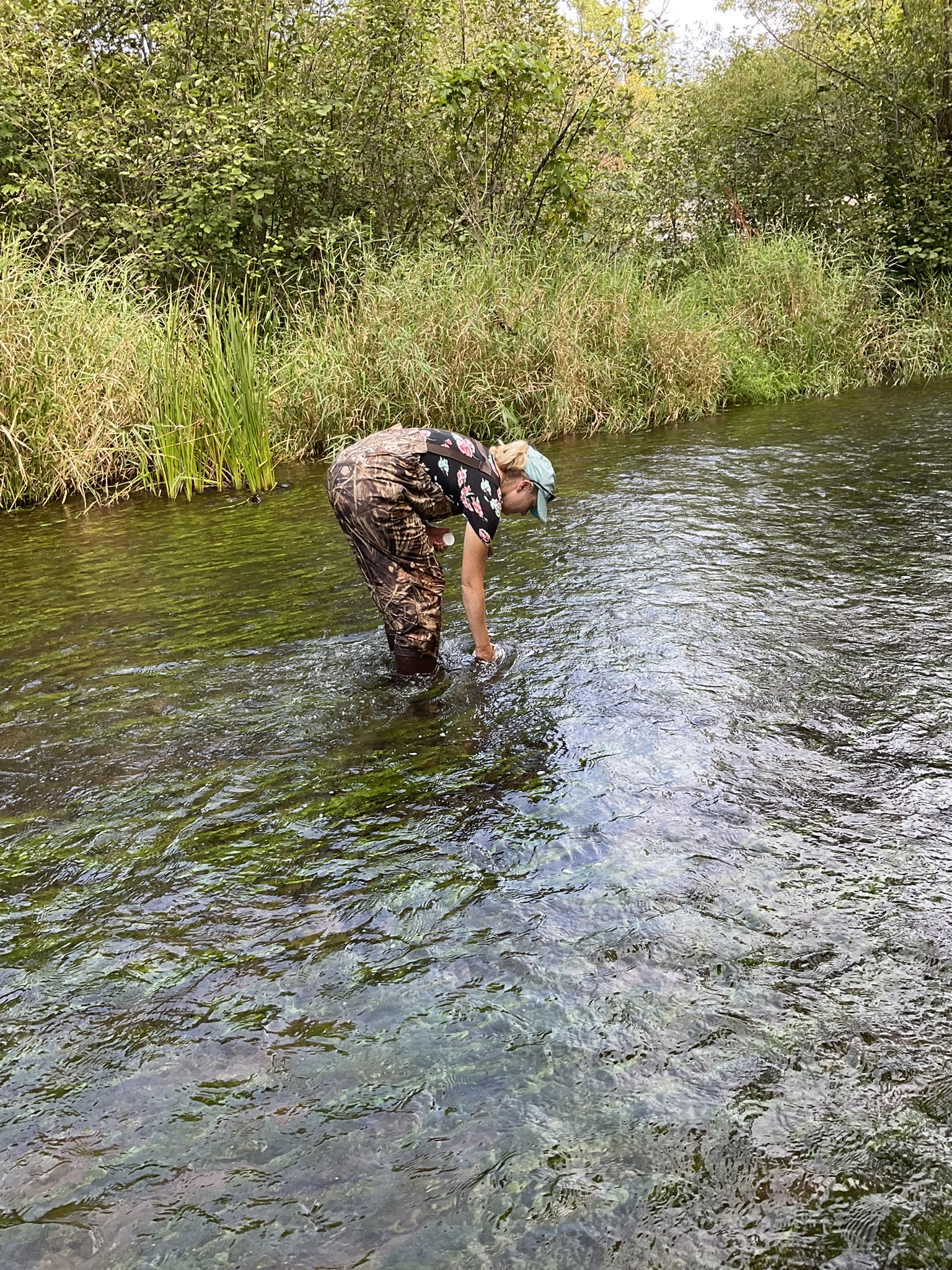
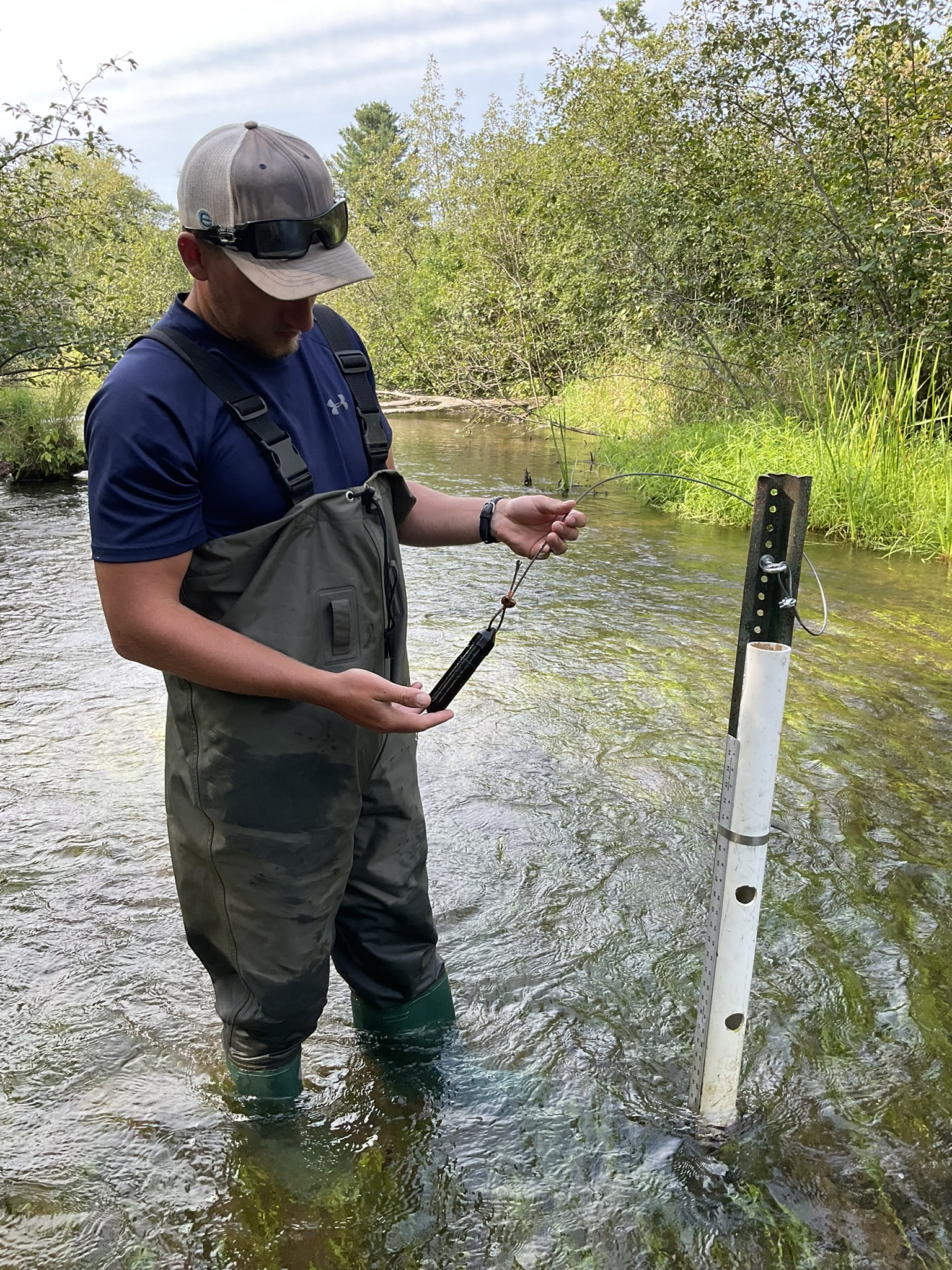
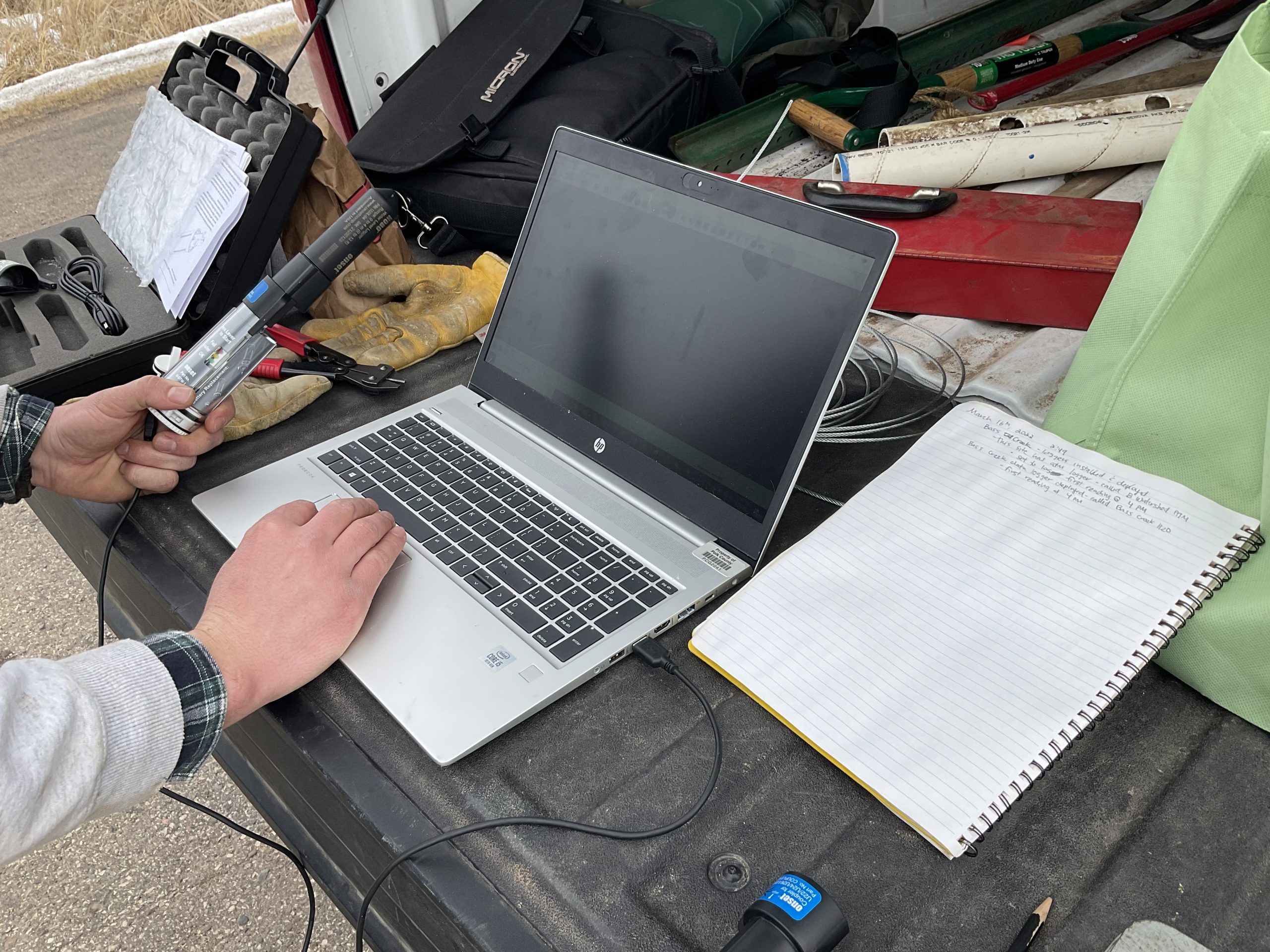
Next, Hayley fills a transparency tube with water and calls out “greater than 120 cm” which is data Katelin quickly enters into a spreadsheet in excel on an iPad. While Trent grabs information for current stream dissolved oxygen and temperature conditions using a probe, Colton, Katelin, and Hayley set up to collect flow data for the stream using a flow meter.
Flow, along with water depth, is collected at various points across the width of the stream and is recorded in excel. Flow data, when paired with the data from the HOBO logger and total phosphorus will be used to determine how many pounds of phosphorus are moving through each tributary on an annual basis. This data, along with macroinvertebrate sampling, with be used to determine baseline stream health conditions for each tributary.
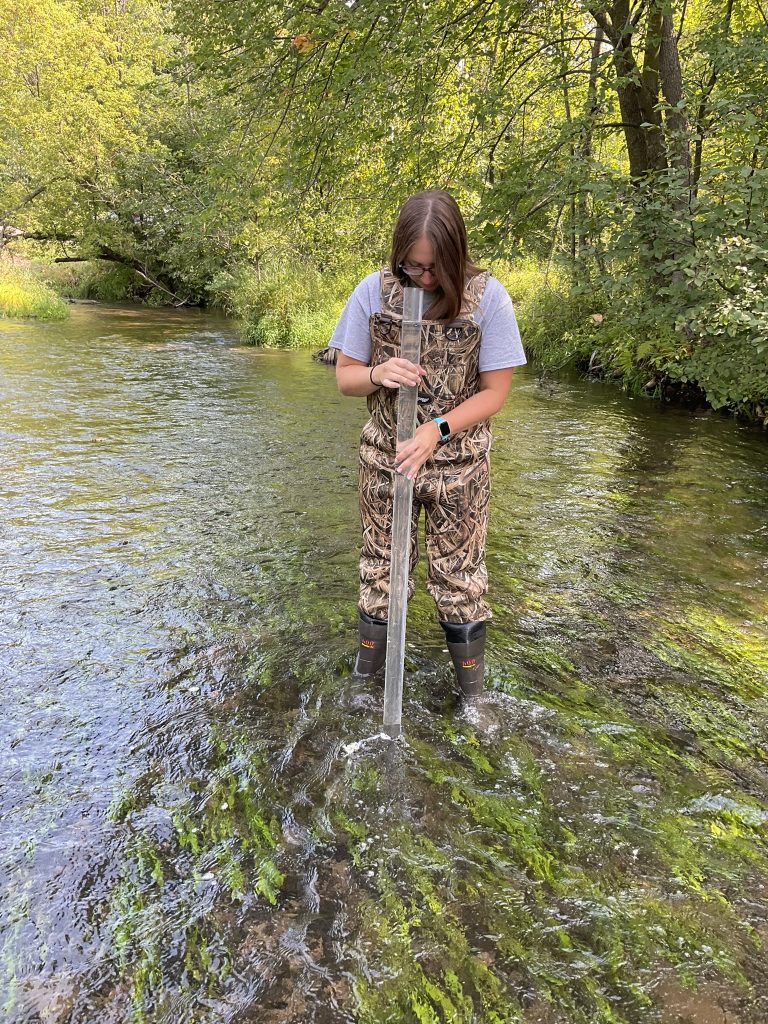
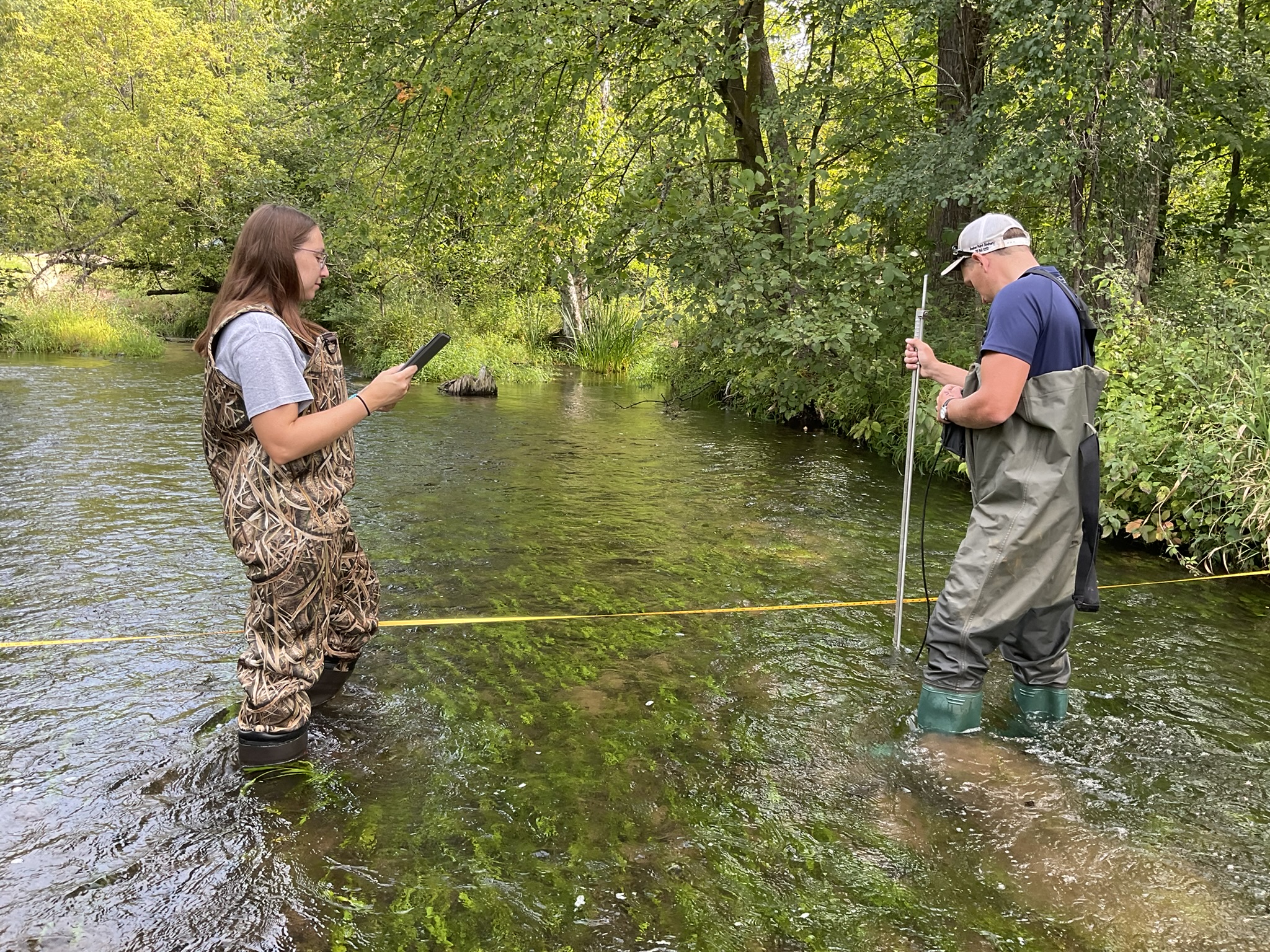
Although the grant only funds stream data collection through 2023, Colton and Katelin offered their first WAV training for volunteers this summer to provide continuity in the collection of this valuable stream data. But for now, with one stream down, everyone changes out of their waders, loads up the truck, and it’s off to the next site!